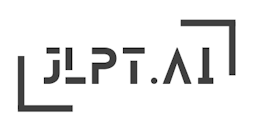

N4CommonParticles
no you ni / no you na
Used to express similarity or comparison. のように (no you ni) is used to compare actions or situations, while のような (no you na) is used to describe the characteristics or qualities of a noun.
Verb + のように
泳ぐのように楽しい (Fun like swimming)
Noun + のような
雨のような涙 (Tears like rain)
彼は猫のように静かに歩く。 (Inspired by real-life observation)
He walks quietly like a cat.
かれはねこのようにしずかにあるく。
Kare wa neko no you ni shizuka ni aruku.
彼女のように美しくなりたい。
I want to become beautiful like her.
かのじょのようにうつくしくなりたい。
Kanojo no you ni utsukushiku naritai.
日本のような文化に興味があります。
I am interested in cultures like that of Japan.
にほんのようなぶんかにきょうみがあります。
Nihon no you na bunka ni kyoumi ga arimasu.
彼は王子のような優雅さを持っている。
He has the elegance of a prince.
かれはおうじのようなゆうがさをもっている。
Kare wa ouji no you na yuuga-sa o motte iru.
彼女は夜空のような美しさを持っている。 (Inspired by poetic expression)
She has the beauty of the night sky.
かのじょはよぞらのようなうつくしさをもっている。
Kanojo wa yozora no you na utsukushisa o motte iru.
Which of the following means 'He sings like a bird'?